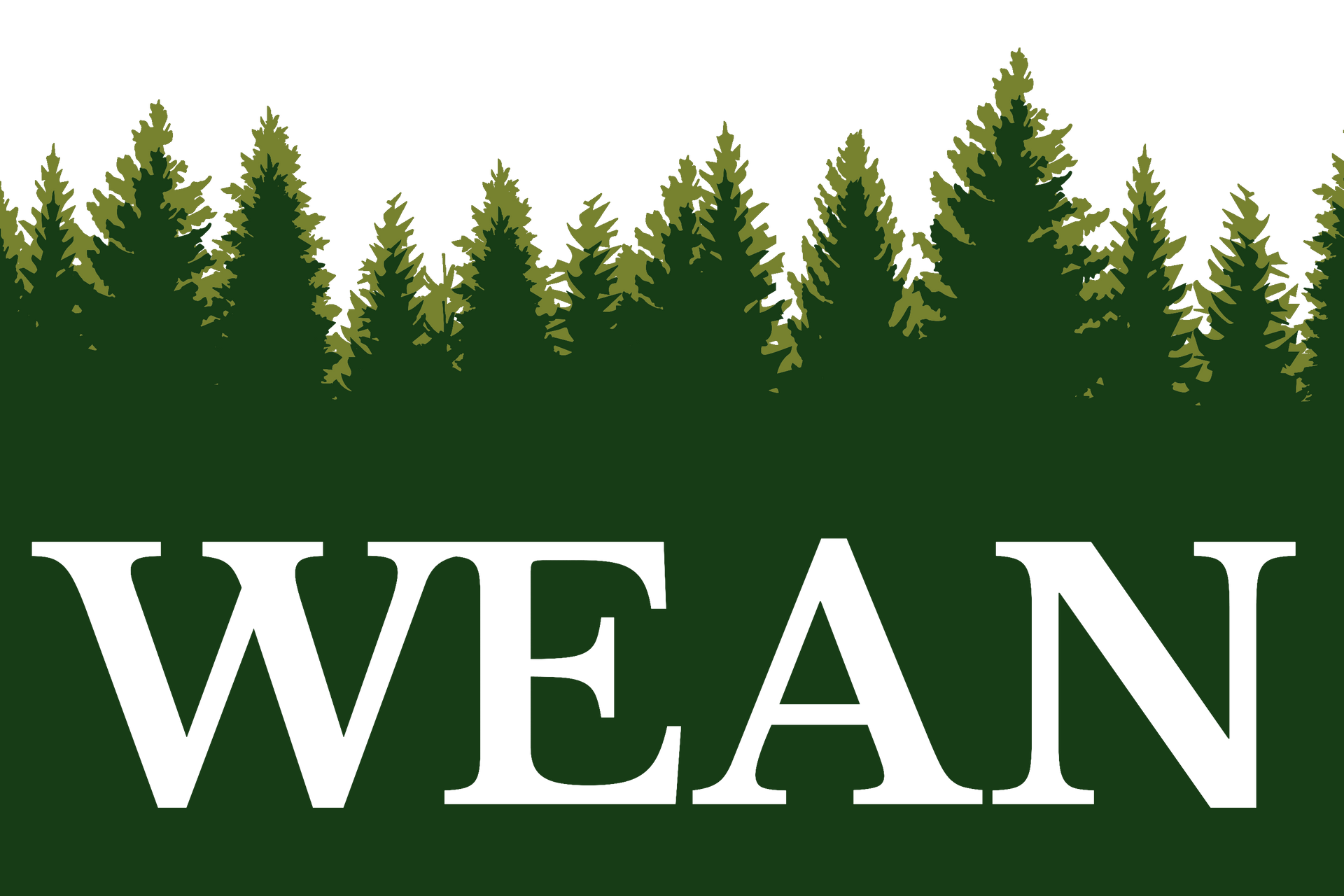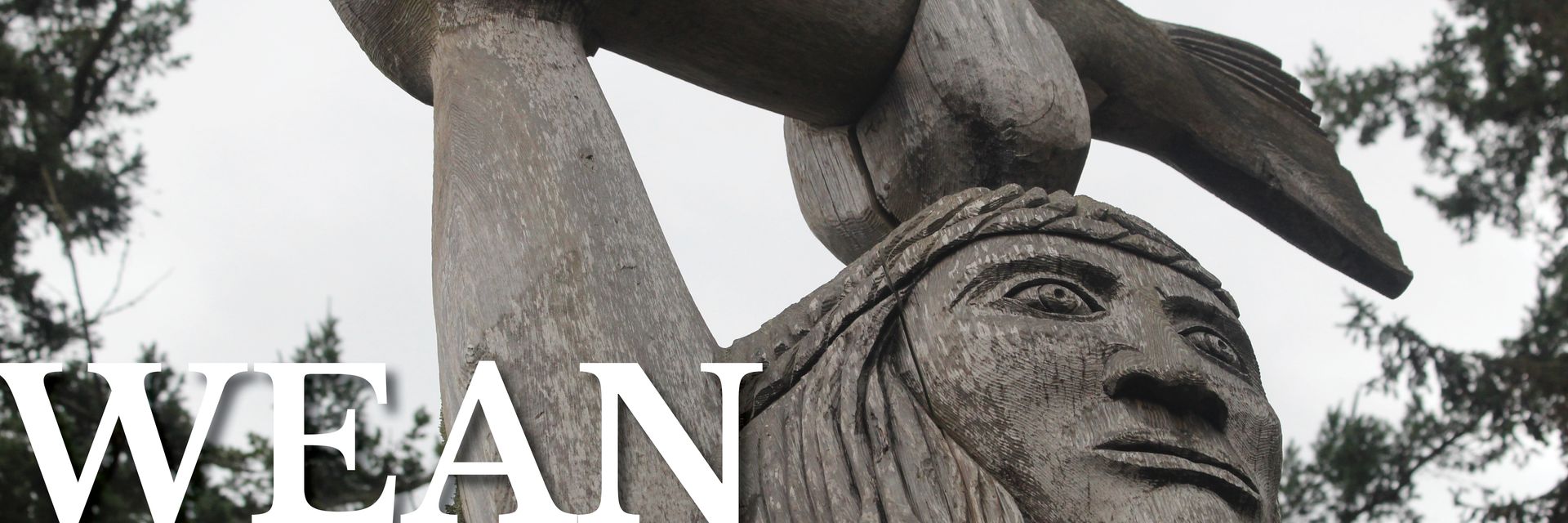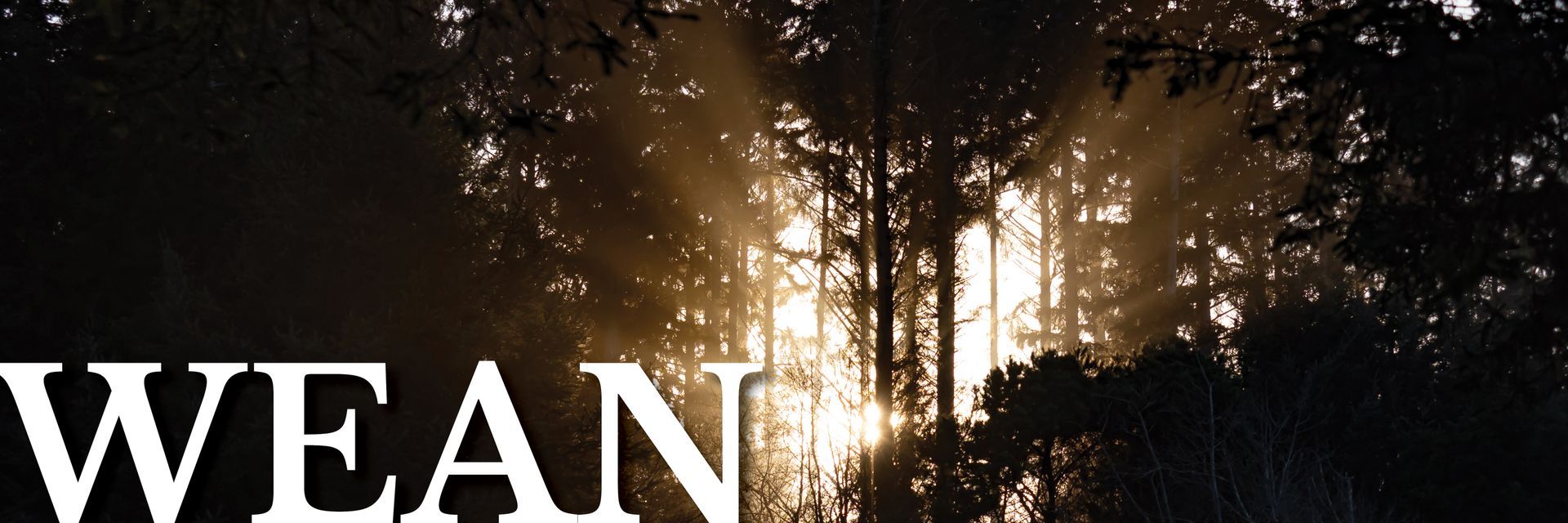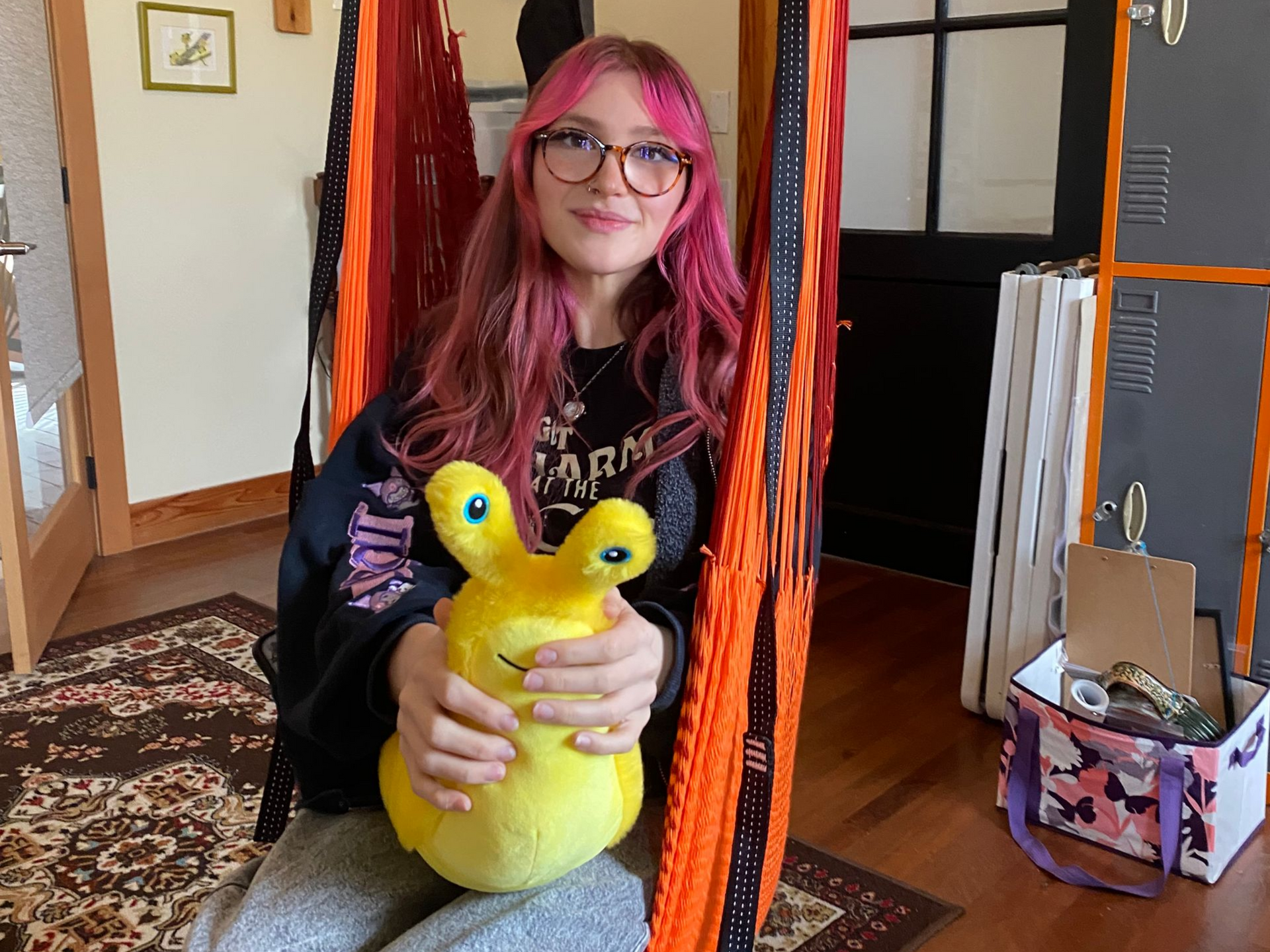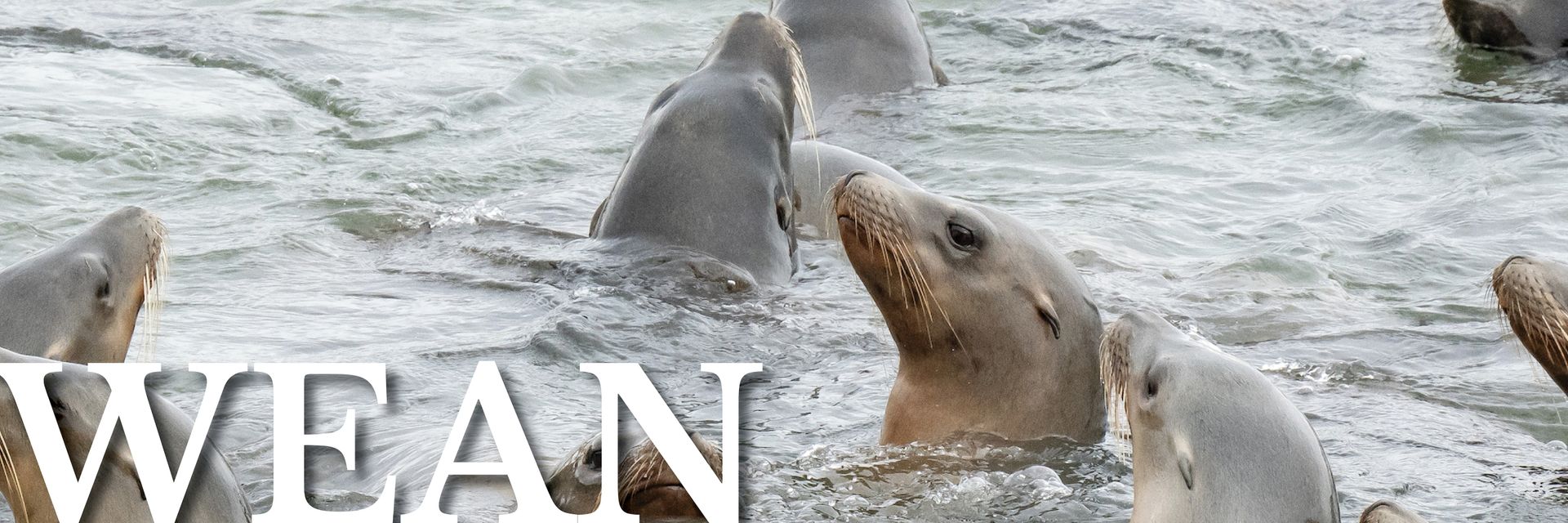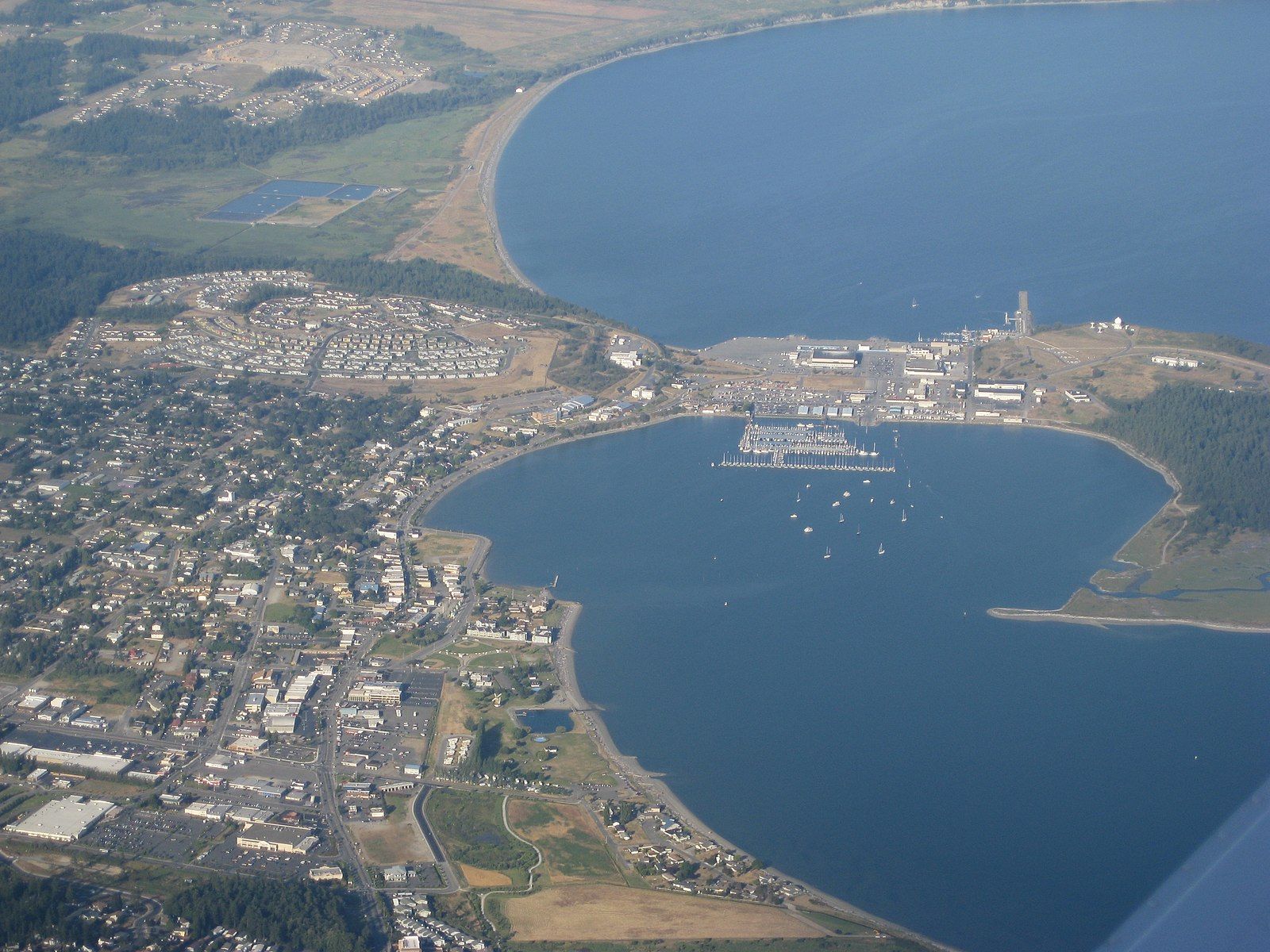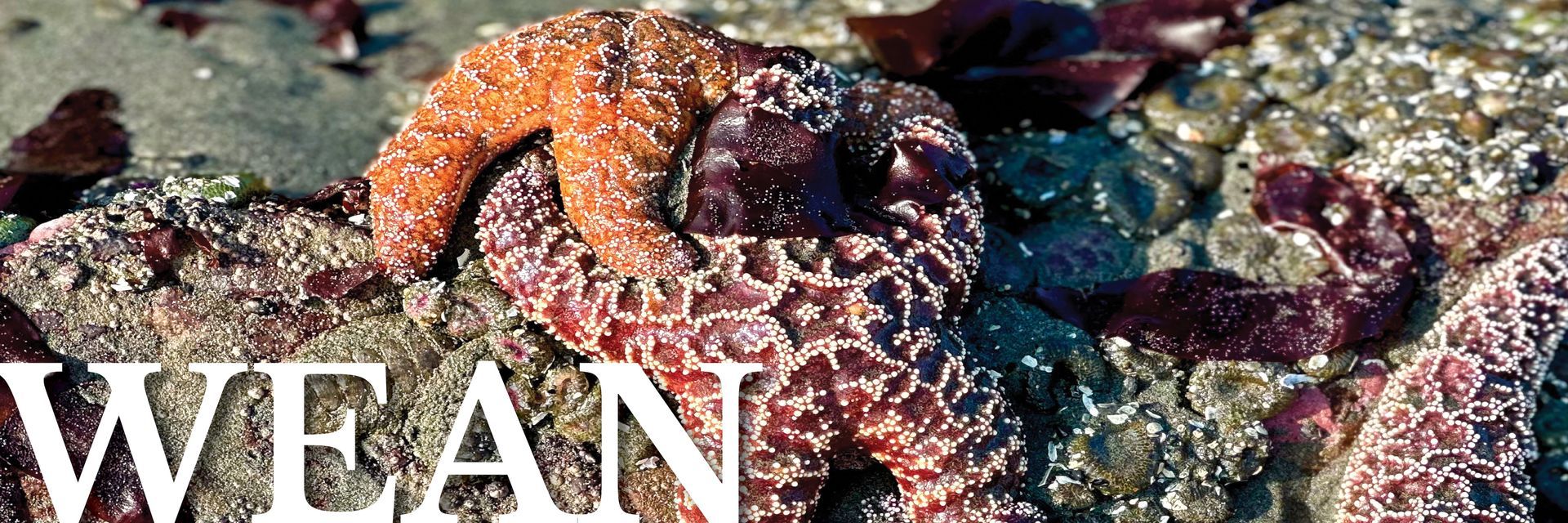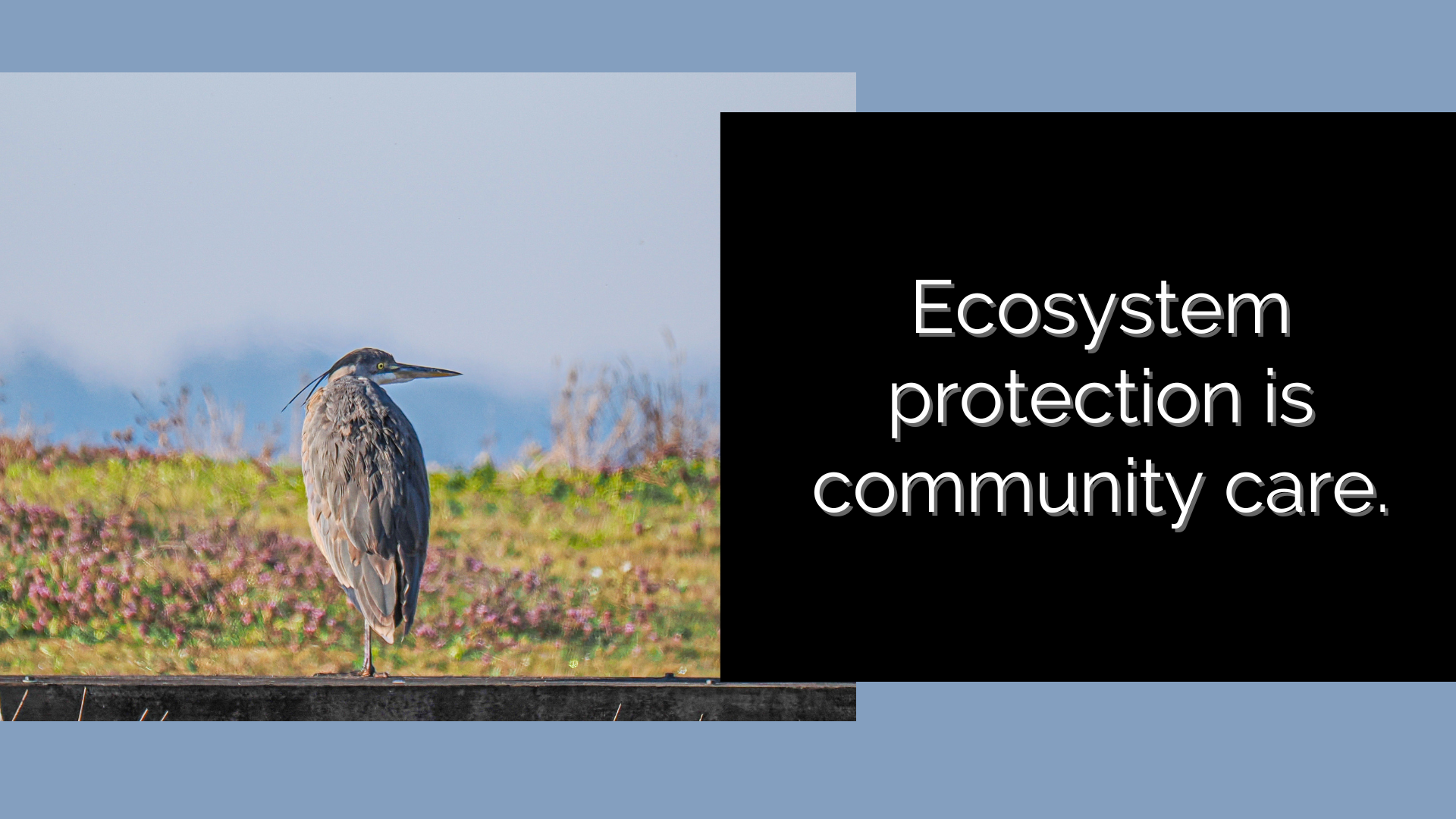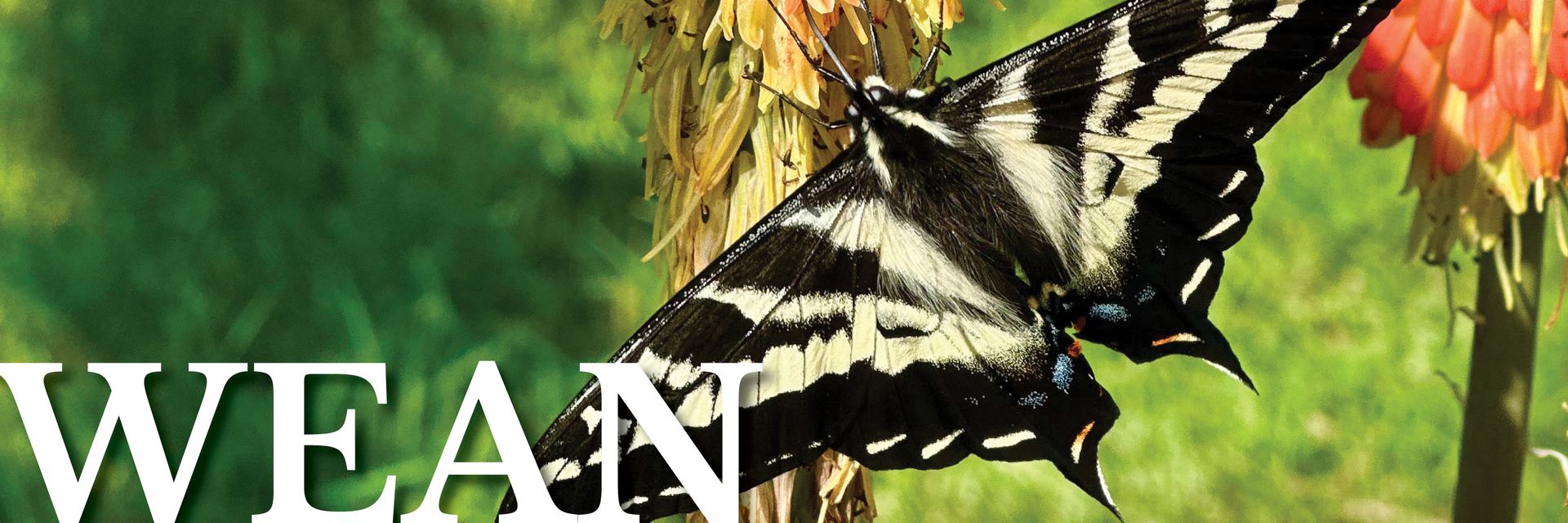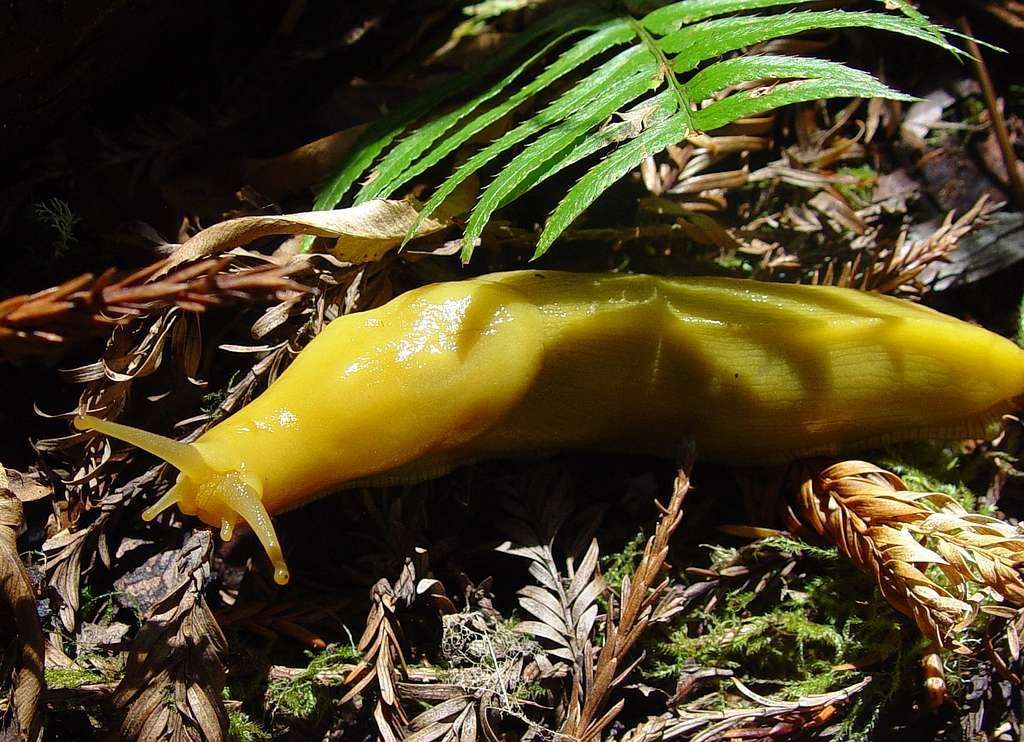For Love Of The Vanishing Prairie: How WEAN Saved Smith Prairie At Pacific Rim Institute

By Amanda Bullis
As we celebrate summer here on Whidbey Island, the prairie lands at Pacific Rim Institute are in full bloom, a spectacular sight to see — and burgeoning with real ecological significance. Before becoming home to the Au Sable Institute, this special grassland was up for sale for residential development by the Department of Fish and Wildlife in 1999 to make up for a shortfall in the state budget. Our founders Steve Erickson and Marianne Edain, recognizing this glacial outwash prairie remnant as a vanishing ecosystem, stepped in to save it. Today, the Pacific Rim Institute stewards this exceedingly rare ecosystem.
“This is like stuffing the last salmon and selling it as a wall ornament to raise money for fish conservation. A budget shortfall is not a good reason to toy with the extinction of a vanishingly rare native ecosystem."
— Steve Erickson, in WEAN’s letter to former WA Governor Gary Locke in 1999
Smith Prairie, A Glacial Remnant Prairie Of Great Significance
WEAN founder Steve Erickson was first drawn to Smith Prairie in Coupeville on Whidbey Island in 1997, where he discovered a particular species with “shooting star” flowers,
Primula hendersonii, previously unknown on the island. The prairie is a “glacial outwash prairie remnant,” which means that it was formed by the moving of the Pleistocene glaciation that created Puget Sound 11,000 years ago, leaving gravely, well-draining soil in its wake. There are only a few of its kind left in the region and only one on Whidbey Island, the Smith Prairie in Coupeville on the Pacific Rim Institute campus.
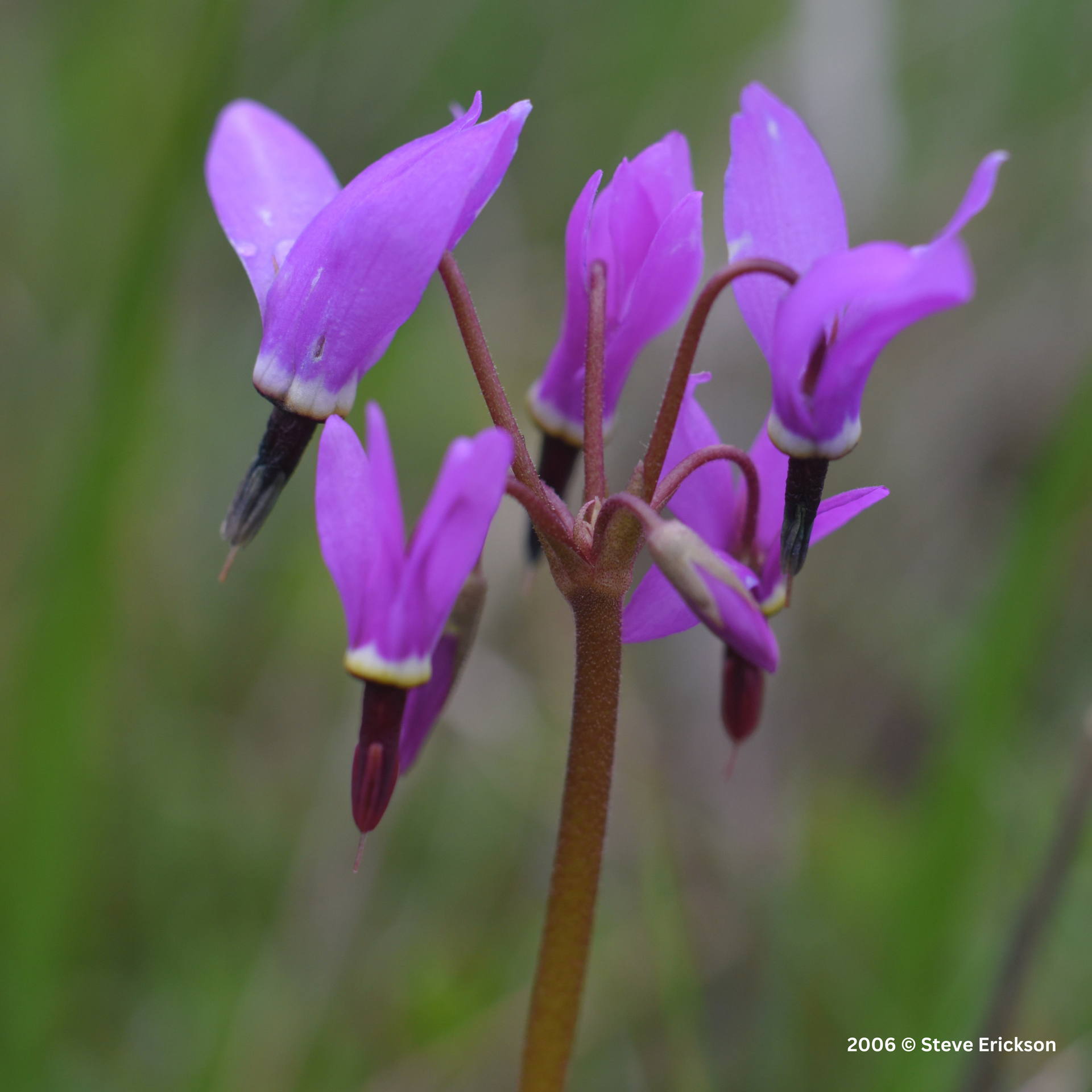
Steve and Marianne, along with Chris Chappell, who was working as a Vegetation Ecologist for the Washington Department of Natural Heritage at the time, identified a myriad of plants on the prairie in 1998, then owned by the Department of Fish and Wildlife.
“For me, the most exciting species was Brodiea howellii, now renamed Triteleia grandiflora, common name fool’s onion,” recalls WEAN co-founder Marianne Edain. The group had been walking along a fence line on the prairie when Marianne spotted a single light blue flower among the conifers. They barely ID-ed the flower before a neighboring horse bowed its head and chomped it up. Several more ecologists visited the property in 1998 and during a field visit on May 22 of that year, Chris Chappell officially evaluated the prairie for significant native plant communities. Upon the discovery of Festuca idahoensis, also known as Idaho fescue, Chappell determined approximately 4 acres of Smith Prairie to be a true “remnant prairie.” Idaho fescue is listed in the Washington Natural Heritage Plan (1997) as a Priority 3 species for protection. The presence of Idaho fescue, found specifically on prairies with a history of maintenance through controlled burning by indigenous tribes, confirmed that this prairie is a remnant of grassland wholly unaffected by European settlers. As grasslands disappear across the world, remnant prairies have become exceedingly rare.
“The presence at this site of many native species in abundance on this environmental setting make it important to consider as a site for conversation of biological diversity,” writes Chris Chappell in his 1998 field report. “Well over 99% of the northern Puget Lowland outwash prairie has been converted to other uses or severely degraded by past disturbances.”
In 1999 the Department of Fish and Wildlife, who owned and operated Smith Prairie as a pheasant game farm, put the 175-acre property up for sale for residential development as a part of the state’s strategy to make up for a budget shortfall. The Fish and Wildlife proposal would have divided the property into twelve 10-acre parcels zoned for between 23-46 homes. Despite the critical discovery of Idaho fescue on the property, the Department conducted a SEPA review of the property and issued itself a “Determination of Non-significance,” claiming there would be no significant environmental impact in converting the land to residential use.
With this rare ecosystem in jeopardy, WEAN filed a civil lawsuit against the Department of Fish and Wildlife and launched a public campaign to save the prairie.
Why Do Prairies Matter?

Grasslands make up over one-quarter of the earth’s land. Vast swaths of homogenous fields or ornamental wildflowers to the naked eye, in reality, grasslands are complex, biodiverse communities that inhabit an array of creatures, from large mammals to microscopic communities of insects enriching the deep, fertile soil. In addition to being hotspots of biodiversity, grassland ecosystems are thought to be vital carbon sinks that have the potential to mitigate rising temperatures due to climate change.
Grasslands are also the
most threatened and least protected biome
on the planet with a conversion rate that, surprisingly, far surpasses deforestation. The big, human-generated tension with grassland is balancing agricultural and residential development with critical ecosystem preservation. Temperate grasslands — known in North America as prairies — often have rich, deep soil that is excellent for farming. Over-cultivating the land for agriculture, however, disrupts the natural ecosystem of these wild places
to disastrous effect.
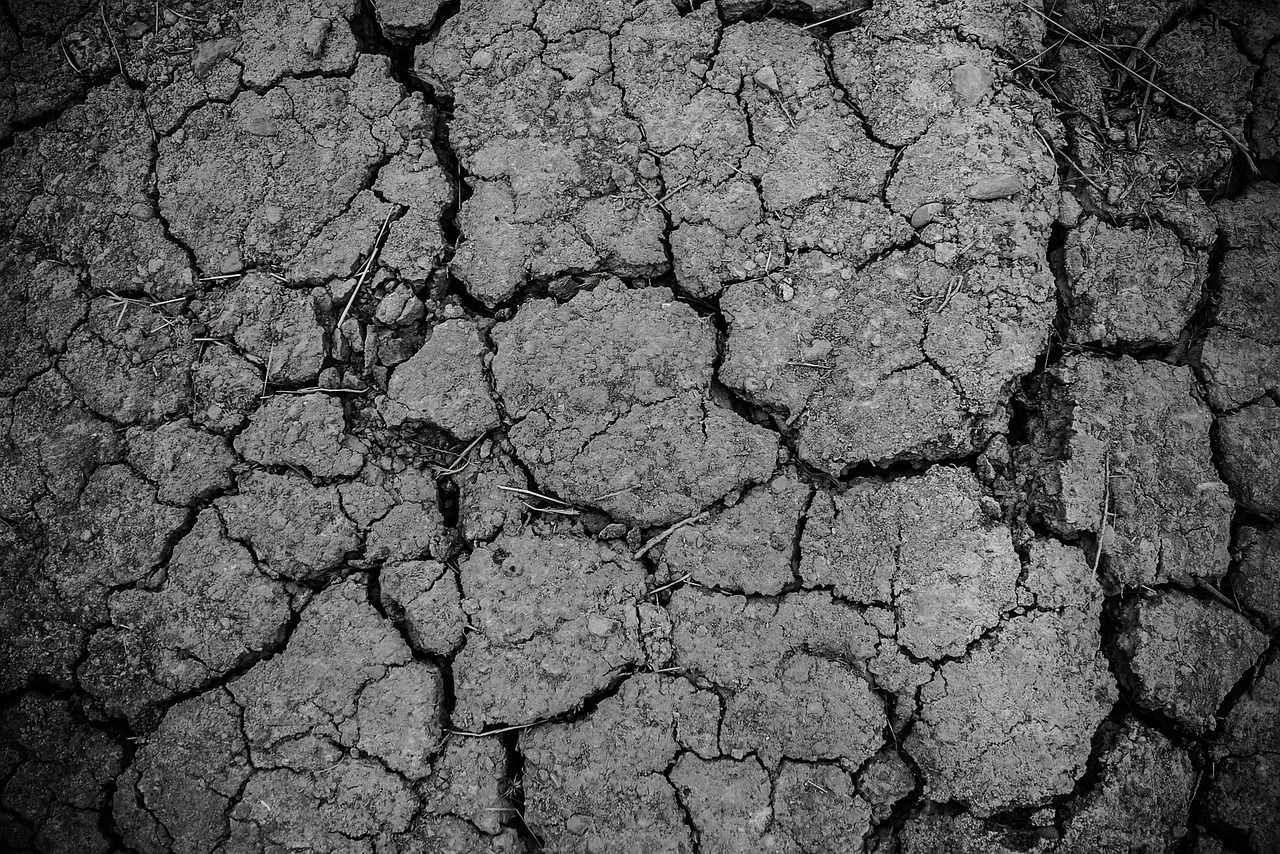
The rapid conversion of prairie land to farmland in the Great Plains region, galvanized by the Homestead Act of 1862, greatly contributed to the catastrophic ecological conditions resulting in the Dust Bowl in the 1930s. The Act, which offered up to 160 acres of “free” land to settlers who agreed to cultivate the land for agricultural production, encouraged settlers to move into the Great Plains and begin farming the land.
What happened to the Great Plains? The rapid conversion of prairie to farmland degraded the ecosystem. In very simplistic terms, if you remove too much grass, the whole thing begins to fall apart. An unsung hero of the planet biome, grass does tremendous work. Grass provides food and habitat for wildlife and grassroots help build soil and create food stores for plants during winter and drought. As a result of the decimation of the prairie ecosystems in the Great Plains region, the soil degraded, and there was nothing for grass to hold on to. Subsequently, the whole prairie, including the animals and organisms that subsist off the grass, dried up. Lack of vegetation across the plains created high wind conditions, in conjunction with a prolonged period of drought, resulting in “black blizzard” dust storms that plagued the region for over a decade. It took the region years to recover economically from this environmental disaster and the biodiversity of the landscape has never recovered.
In the U.S. only
4% of tallgrass prairie habitat remains. In the State of Washington, prairie habitat covered
180,000 acres before European settlement.
According to the Department of Fish and Wildlife, only 3% of prairie habitat remains in the Puget Sound region, and on Whidbey Island, only
1%.
Public Outcry Protects Prairie, PRI Takes Up Stewardship
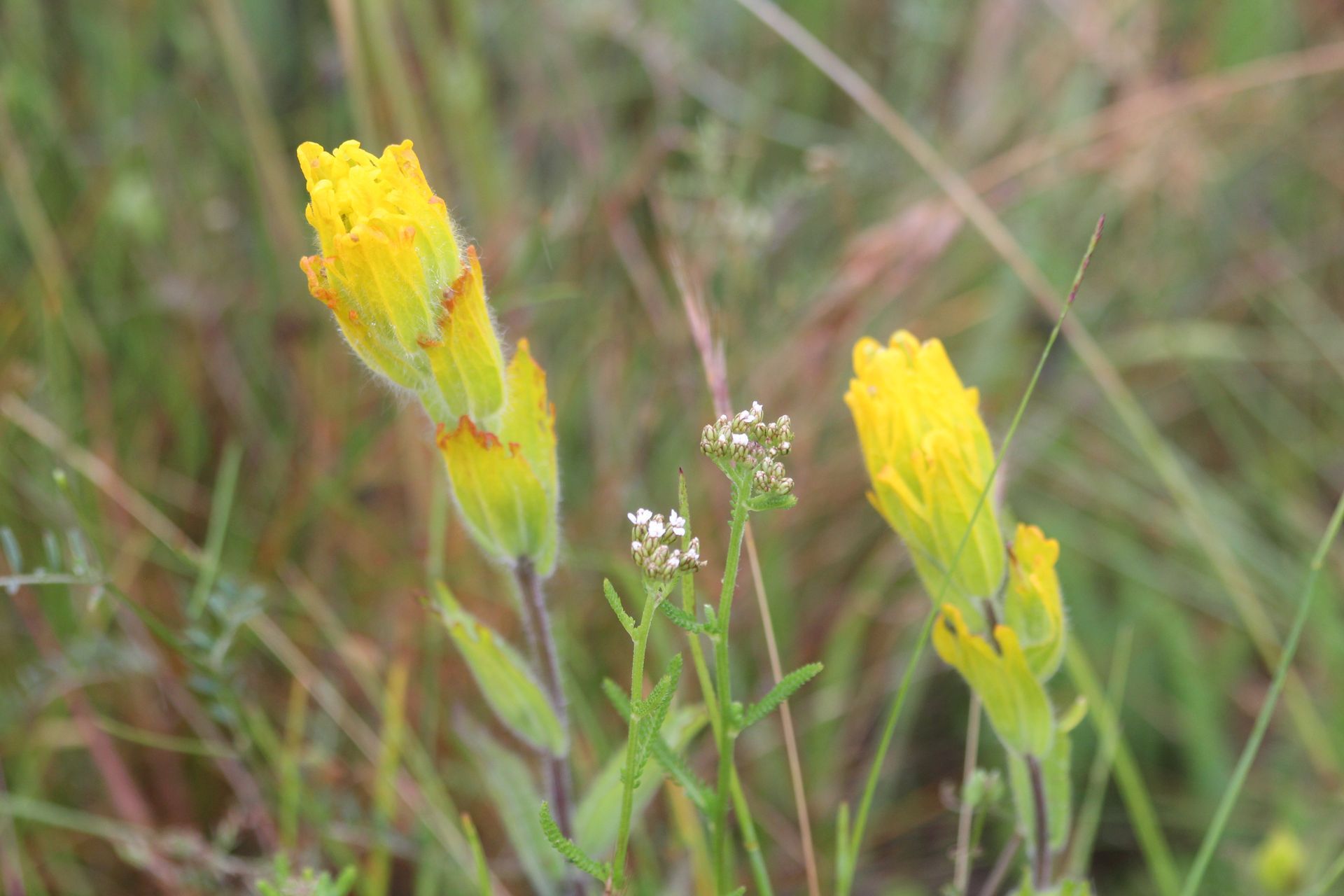
"Quite frankly, we do not want to have to engage in litigation against a state agency with which we usually work cooperatively with. I hope a solution can be found that guarantees the dedication of the Dept. of Fish and Wildlife's land on Smith Prairie to the long term conservation and restoration of the native prairie."
— Steve Erickson, in WEAN’s letter to former WA Governor Gary Locke in 1999
After WEAN filed the lawsuit against the Department of Fish and Wildlife to save the Smith Prairie in 1999, local environmentalists rallied the community to protest the sale of the rare ecosystem for residential development. As a result of wide public outcry state Representative Kelly Barlean, the Republican representative from Langley at the time, sponsored a state bill that directed the property to be sold to a buyer that would preserve the prairie in its natural state.
The bill, which would give one year for environmentalists to find a conservation buyer for the property, passed state legislature in 1999. As a part of the bill, remarkably, WEAN was given the right to screen and approve potential buyers of the land. Once Michigan-based environmental non-profit Au Sable Institute was approved to buy the land, WEAN dropped its lawsuit and began working with Au Sable to protect the property.
Au Sable purchased the property in 1999 and stewarded the land for a decade. Then in 2009, under the leadership of then Executive Director Robert Pelant, the newly formed
Pacific Rim Institute took up the mantle of prairie preservation. For the last number of years, PRI has not only preserved this rare landscape but has actively engaged in prairie restoration efforts that have had an impact on the return of native plant species in the region, including the iconic native perennial
Castilleja levisecta, known as golden paintbrush. In 1997, golden paintbrush was listed as an endangered species, with only 10 known populations in the Pacific Northwest. Propagation of golden paintbrush at PRI contributed significantly to the restoration of this native perennial to ecosystems across the region, ultimately resulting in
Castilleja levisecta being
de-listed from the endangered plant species list in 2023. In addition to prairie maintenance and restoration, PRI planted a field of Garry oak trees on the property in 2002 to restore another critical, vanishing ecosystem, the oak savanna.

Prairies in the Pacific Northwest are anthropogenic, which means the ecosystem has been shaped by humans. Prior to European settlement, prairies were maintained for thousands of years by indigenous communities in the region through the practice of controlled burning with fire. Controlled burns are still a big part of prairie maintenance at PRI, as burning the prairie with fire provides specific benefits that can only be achieved through burning.
“You get so much thatch build up and can’t get the seed to the soil without a burn,” says Mosa Neis, PRI’s lead restoration technician. “It also breaks dormancy on some seeds and soil nutrients get reintroduced. The native species respond positively to the burn, but invasives don’t.”
PRI tries to burn “as much as possible,” says Mosa. However, the process is complicated and requires firefighters with specific training. Plus the weather needs to cooperate. The last burn on the prairie was in 2020, but Mosa says they are hoping to burn more regularly now that the Central Whidbey Fire Department has more members who are certified for this special kind of work.
One native plant that thrives under controlled burns is Camassia quamash, known as common camas, whose edible bulbs have been a source of starch central to the diet of local indigenous communities for centuries. For the last seven years, Pacific Rim has hosted an annual camas bake coordinated by the Coast Salish Youth Coalition. All 11 tribes in the area are invited to participate in this private event on the land.
“The first five years we only had about 15 people,” says Mosa. “But this last year we had over 130 participants.” In a new ongoing project, also coordinated by the Coast Salish Youth Coalition, Pacific Rim has sectioned off a part of the prairie, completely free of herbicides, for a Sovereignty Food Bed for local tribes.
In addition to the community of native plants that bloom and seed on the Smith prairie, there are a variety of animal wildlife that call this ecosystem home. The Institute is currently flagging parts of the prairie as a part of a five-year monitoring program to test the viability of the prairie for a release site for the critically endangered
Taylor’s checkerspot butterfly.
“You never know what to expect. Every year is different. Every bloom is different. It’s amazing to watch the process year after year,” remarks Mosa. “I love watching the raptors interact with the prairie.”
Avid birder and former WEAN board member Gary Piazzon regularly walks the trails on PRI with his binoculars at the ready. There are all kinds of birds out on the prairie waiting to be spotted, including a pair of American kestrels that nest in the prairie in nesting boxes built for them. They hunt insects and small rodents like Townsend voles living in the grasses. There is also a pair of red tailed hawks that nest on the forest edge. Occasionally, western bluebirds have been sighted visiting the prairie, but they don’t stick around for long.
"If someone could figure out how to get the bluebirds to stick around, I would love that," remarks Gary, wistfully. "They're lovely birds."
With acres of prairie habitat, a budding oak savanna, and 2.2 miles of public trails running throughout the property, the prairie at PRI is a place for the entire Whidbey Island community — human, animal, plant, and insect. A place that exists in no small part because of the critical work to protect this vital ecosystem by WEAN founders Marianne Edain and Steve Erickson, ecologist Chris Chappell, and a whole host of other environmental activists who came together to save this property in 1999.
Seeding For The Future
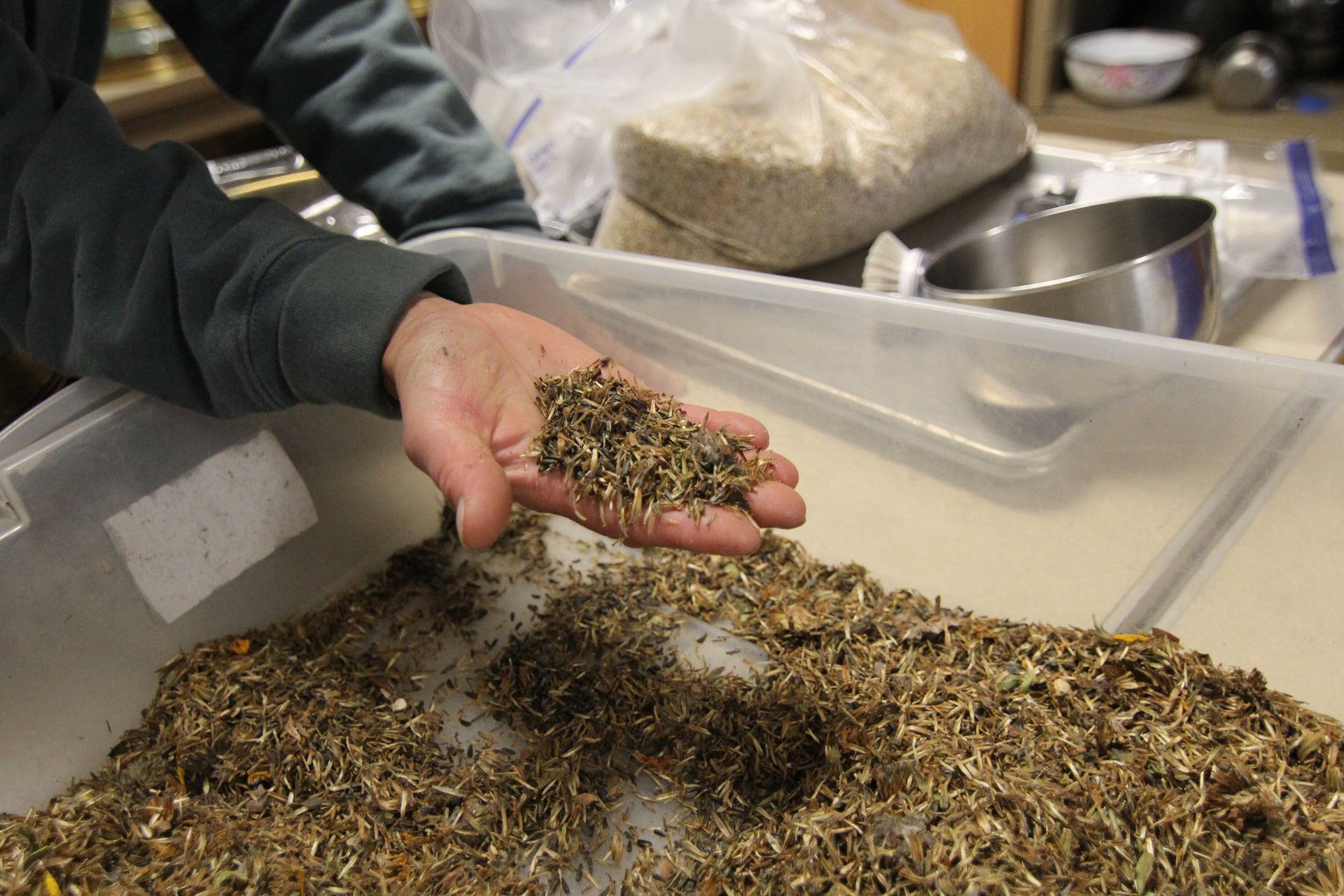
On any given day at Pacific Rim Institute, lead prairie technician Mosa Neis can be found out in the field harvesting seeds or in the laboratory drying, sorting, and packing them for various prairie conservation and restoration projects in the Pacific Northwest. In addition to the seeds harvested directly from the prairie, as of 2022, Pacific Rim has grown nearly 50 species of rare native plants in their nursery beds.
On the day of our interview, Mosa is sorting camas and balsamroot by hand for the 5 acres located on the 216-acre Keystone Farm and Forest Preserve stewarded by the Whidbey Camano Land Trust that is currently being restored to prairie conditions. Seed harvesting is the bulk of the work currently being done at Pacific Rim Institute, which provides native plant seeds critical for prairie restoration and conservation in the region, including golden paintbrush and camas. Currently, PRI provides seeds for Whidbey Island prairie sites maintained by Whidbey Camano Land Trust, NAS Whidbey, and Ebey's Landing. PRI also provides seeds regionally to the US Department of Fish and Wildlife for their prairie sites at Dungeness Spit and Protection Island Wildlife Refuges, as well as smaller conservation projects in the San Juan Islands.
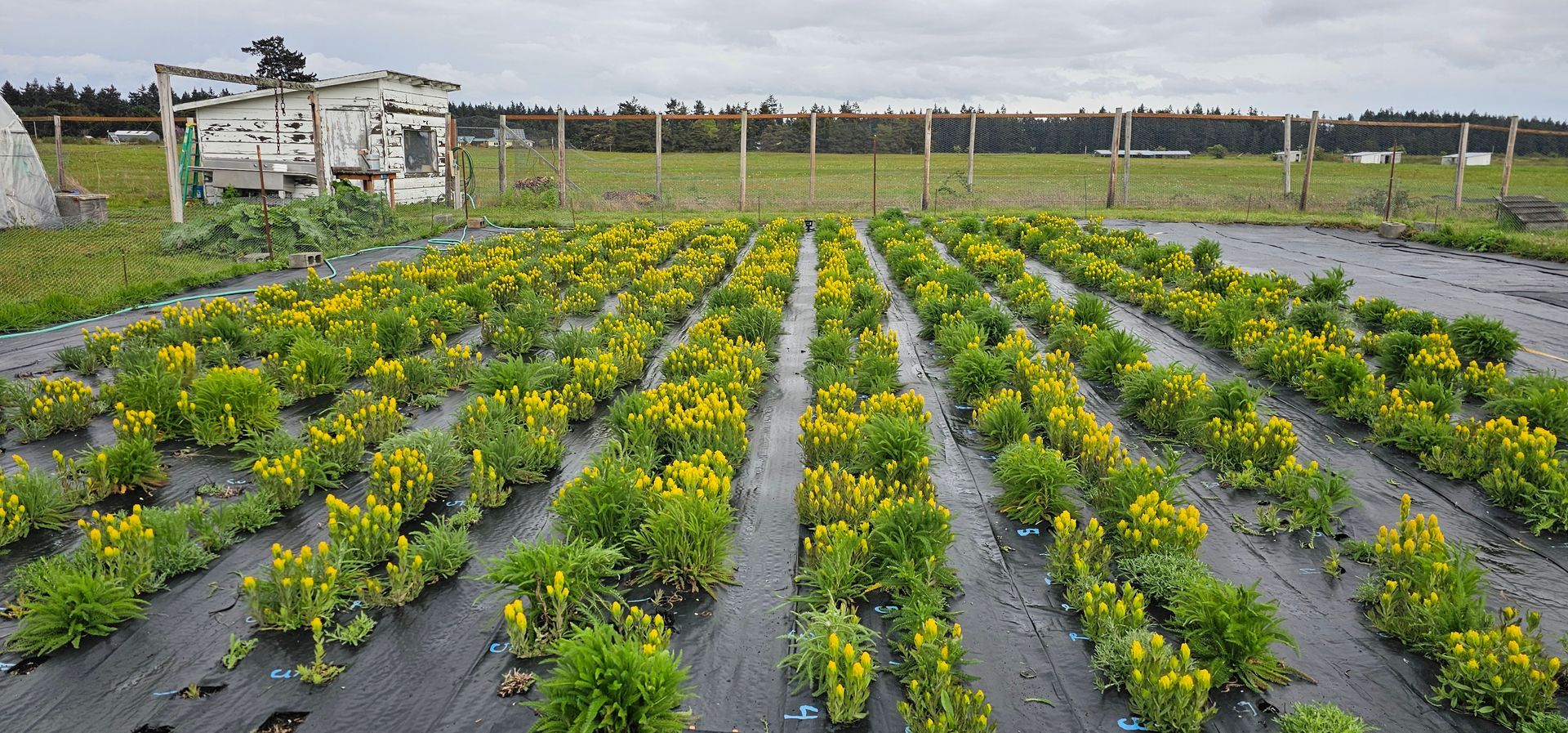
On the Pacific Rim property, Mosa and her team just finished seeding a larger portion of the prairie on both sides of Parker Road so people driving by on the highway can see the beauty of the prairie from the road. This part of the prairie should bloom over the next 3-5 years.
On the prairie and in life: all good things take time. Hopefully, the continued stewardship of this land by Pacific Rim Institute will allow all manner of plants, animals, and organisms to benefit from this critical prairie ecosystem for centuries to come.
Learn more about Pacific Rim Institute by visiting their website.
Going birding at Pacific Rim? Here are some species to look out for.
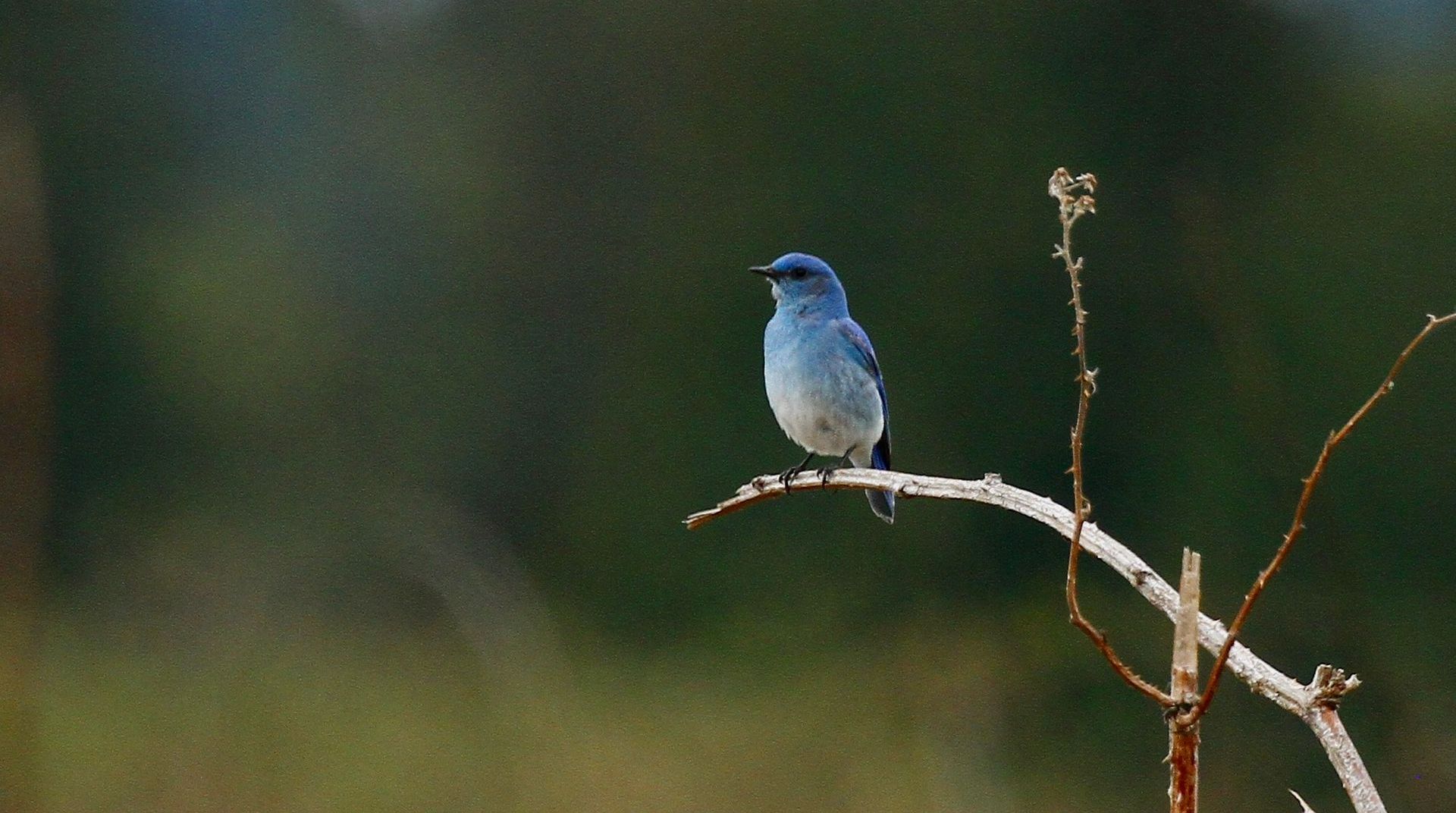
- Warblers (woods area) - summer migrants
- Savanna sparrows (open areas, oak savannas and the prairies) - one of the few places to see and hear them on the island during the summer.
- Blackheaded grossbeak (forest)
- Mountain bluebird
- Bushtits - one of our smallest birds that make a hanging nest. In the winter they travel in flocks of 20-50 looking for insects and insect eggs.
- Brown creepers (fir trees) - this little birds start at a bottom of a tree and work their way up the trunk.
- Red-breasted nuthatchers (woods area) - they sound like a little tin horn!
- Bandtail pigeon - a very regal pigeon with iridescent feathers, a rare find.
